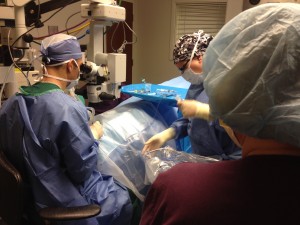More and more people are becoming comfortable with undergoing eye surgery in order to get rid of their need for glasses and are doing so through LASIK and Refractive Lens Exchange (RLE). Since they are a common trend, it is important that these two correctional procedures be explained a little bit more.
(WARNING: Medical content and terminology will be used. We hope we don’t confuse you. But, if you get a little lost you can always contact us to ask any questions.)
Over the past two to three decades, refractive/corrective surgery has been in vogue within the global society. It started in the mid 80’s with RK, also known as refractive keratotomy, and progressively changed to PRK or photorefractive keratectomy. LASIK which stands for laser assisted in situ keratomileusis did not arrive on the scene until the mid 90’s.
LASIK, the better known procedure, is where a partial-thickness corneal flap is created. The laser is then applied to the body of the cornea in order to “flatten” the cornea, so to speak, and correct the vision. This could be near sightedness (myopia), far sightedness (hyperopia), or astigmatism. Typically, within hours, the vision is significantly improved, and patients are instantaneously satisfied with the result.
The pain associated with this procedure is minimal; in fact, the eye simply feels as if there’s a foreign body like a hair in it for 24 hours after which time it feels comfortable. However, not all patients are candidates for LASIK, especially individuals with thin corneas, older individuals, and those with significant refractive errors (if they have significant astigmatism, myopia, or hyperopia).
Since not all candidates are available for LASIK others can be treated RLE which you can read about in blog “Benefits of Refractive Surgery“.

